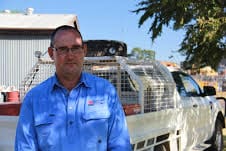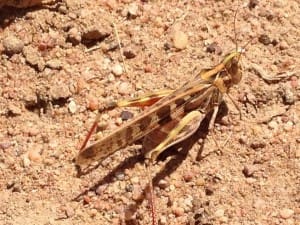Central west NSW landholders are being urged to watch for locusts laying eggs or hatching, and to report any locust activity as weather conditions cool.
Landholders can report any locust activity through contacting their Local Land Services office, calling 1300 795 299 or visiting www.lls.nsw.gov.au/centralwest
Local Land Services is advising central west NSW landholders to:
– mark any known beds and talk to Local Land Services staff on monitoring and management
– monitor for hatching, particularly if you have had 15 mm of rain or more
– report any locust activity, particularly locusts carrying eggs and laying activity.
All locust activity needs to be reported
The Weetaliba, Tooraweenah, Binnaway, Dapper and Dunedoo areas are the main areas of concern for locust activity, Central West Local Land Services said.
However, all locust activity across central west NSW needs to be reported to Local Land Services to allow regional planning and control.
Senior Biosecurity Officer Rhett Robinson said the cooler weather will reduce locust movement.
“Swarm movement is slowing up and they are nowhere near as mobile as they have been in the past.
“If you have them in your area, you should expect to them to hang around. Their movement is really limited,” he said.
“Anything laid now will remain in the ground over winter and come out in late September and October.”
Mr Robinson again reinforced the need for landholders to report locust activity.
“We are seeing more egg laying, particularly in the Dapper area south west of Dunedoo and no doubt other areas too,” he said.
“Any activity needs to be reported so we have a good overview of what is happening in the local area.
“Even low density swarms need to be reported and monitored,” Mr Robinson said.
“They will still pull together in bands to lay.
“If you have 15 mm or more rain and have had eggs laid before mid-March, you should expect to have more locust hatching this autumn.”
The weekly locust update is available from https://youtu.be/DTnfWSWXzpc
Source: Central West Local Land Services



HAVE YOUR SAY